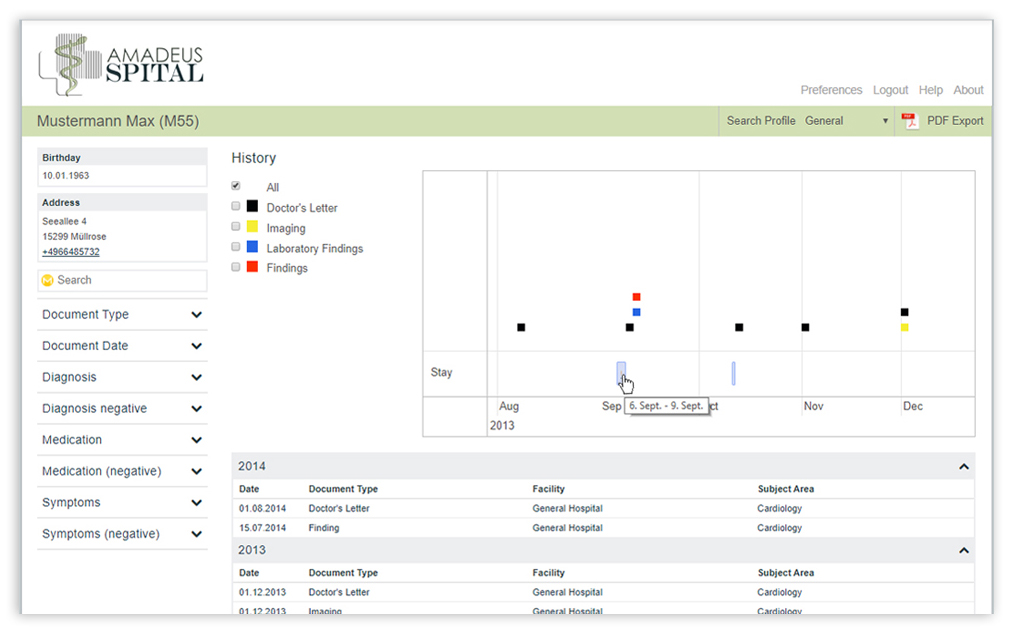Medical Cockpit - The essentials at a glance
Increasingly, physicians are being confronted with a rising amount of data in the course of patient treatment. Yet having all the relevant information available in the right context at the right time is particularly crucial for healthcare institutions. Attending physicians usually have very little time to prepare for the next patient, making it all the more critical that all the necessary information about the patient is available at the touch of a button.
The data contained in patient documentation is typically stored in an unstructured format and scattered throughout a wide variety of document types. But manually searching through voluminous patient medical histories not only takes far more staff time than is available, it also harbors the risk of overlooking a crucial piece of information. Conventional search solutions may eliminate the need for manual searches to some extent, but in most cases they only provide a summary of data that is available in a structured form, such as information from clinical trials, coded diagnoses, current medication, or laboratory values. They can’t search lengthy text documents such as diagnoses or doctor’s letters, since access to this information can only be obtained when the content is understood.
Now there are new systems that support this. Today, the Medical Cockpit can already present an intelligent summary that displays diagnoses and therapies at a glance – in line with the subject matter and the specific case in question.
Using methods of artificial intelligence, dates, diagnoses, therapies, and medications can now be extracted from unstructured data such as doctor’s letters, findings, and care reports.
Specific patients, cases, and documents can be found in no time at all using simple keywords (symptoms, diagnoses) or specific properties (risk factors, long-term medications) through links to service catalogs, diagnosis catalogs, synonym and jargon lists.
Depending on the subject and occupational group (physician, caregiver, therapist), users can call up a compilation of all the information currently required – such as the complete information on a patient. Regardless of the device, the results are displayed using a standard browser and are restricted to the context of the given case by means of subject-specific filters.
The resulting 360-degree view significantly improves the quality of the treatment and greatly facilitates the work of the hospital staff.
Latest Blogs
Inside Insight: How Journeys and Touchpoints Make Enterprise Search Effortless with Mindbreeze Insight Workplace
Picture this: you’re preparing for a high-stakes client meeting.
The Future of Enterprise AI Depends on Smarter RAG Solutions
Today’s enterprise leaders ask how to make AI meaningful, responsible, and scalable. One architectural approach stands out as organizations look beyond isolated proof-of-concepts and begin embedding AI into workflows: Retrieval-Augmented Generation (RAG).


